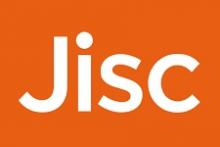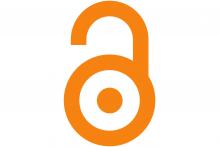'Crucial time' for OA monographs

Image: Svetlana Buzmakova/Shutterstock.com
'Elitist world' discriminating against humanities must be avoided at all costs, write Martin Eve and Anthony Cond
In many ways, 2021 has been the year of the ‘starting pistol’ for open-access books. UKRI announced its mandate will take effect from 2024. The ‘Plan S’ group of funders also launched its principles for OA for monographs. We await the REF consultation on open access.
The REF review, in the UK context, will be far more significant than the UKRI announcement. If all books submitted to REF must be openly accessible, this will account for a far greater proportion of the UK’s humanities research than the project-funded outputs.
However, one of the core problems with such mandates is that the business models to support these models are flawed. Book Processing Charges of over £10,000 per book will not scale. Our recent estimate of the costs to make 75% of REF books open access was £19.2m per year. Such extra investment is not forthcoming. Further, this money is not, currently, in the system in the right places. It is all very well when a researcher has a grant that can cover such charges. Such cases, in the humanities disciplines, though, are few and far between. In the UK context, but with overseas analogies, most research in these disciplines is subsidised by QR rather than project funding. Hence the importance of the REF review.
The COPIM initiative, funded by Research England and Arcadia, a charitable fund of Lisbet Rausing and Peter Baldwin, has been working on another model: Opening the Future. This model, adopted by Liverpool University Press and the Central European University Press, works by libraries purchasing a set of backlist titles (that are not openly accessible) and the presses then using this revenue to make future frontlist titles open access. This means that libraries with only a traditional book purchasing budget (and not an “open access budget”) can also participate, which traditionally is not the case. The important point here is that we are attempting to repurpose existing budgets
Liverpool University Press and the Central European University Press have both had strong traditions of pursuing novel routes to open accessibility of their titles. But both are also beholden to financial realities. Research monograph publication was never hugely profitable in the first place. The additional strain from open access is challenging, unless we have solid library support.
Alongside these initiatives, we are seeing an emerging set of important pilot models that seek to address these challenges. MIT Press have launched their flagship Direct to Open initiative, which seeks to unlock their entire frontlist in any year, if enough libraries sign up for membership. Cambridge University Press has a “flip it open” model, in which books that sell enough copies to recover their costs will be made open access. Membership models at born open-access and ScholarLed presses such as punctum books and Open Book Publishers have led the way.
There are also remaining challenges around open licensing. The UKRI review softened its stance on strict CC BY licenses in the light of recent instances of low-quality reprinting of OA books by third-party companies. In art history, the re-use of in-copyright third-party material makes it difficult to incorporate visual artifacts that are the equivalent, for this discipline, of textual citation. Creative writing that reaches a broad public through sales may, likewise, struggle. This is why sensitivity to exemptions has been so key in the monographic space. We hope the REF review will recognise these challenges.
Finally, of course, an option that has been under-explored in this space is green OA for monographs. Green open access refers to conditions where an author’s accepted manuscript, or later version, is deposited in an institutional or subject repository. The pandemic has also altered the sales profile of the book, with a longer, stronger sales tail.
Authors have been less than keen for their book manuscripts in pre-production form to be exposed openly. For one thing, it is far easier for mistakes and infelicities of language to creep in at the length of a book than at the journal length. For another, the proliferation of versions and the ongoing dialogue and work with publishers from contract to production makes it far harder to separate out whether a manuscript is the author’s… or the author’s and the press’s, combined.
It is an exciting time for OA monographs. But the landscape can appear confusing to libraries and authors. The next year will be crucial in terms of mandates and models. What we cannot do, at this point, is throw our hands up and say that everything is too complicated and do nothing. Without investment in pilots and without author engagement, we will reach a bad place. We will reach a world where all scientific work is free to read by the public, but all humanities work is prohibitively expensive. We must avoid this elitist world at all costs.
Martin Eve is strategic lead in digital education at Birkbeck, University of London; Anthony Cond is chief executive officer at Liverpool University Press.










